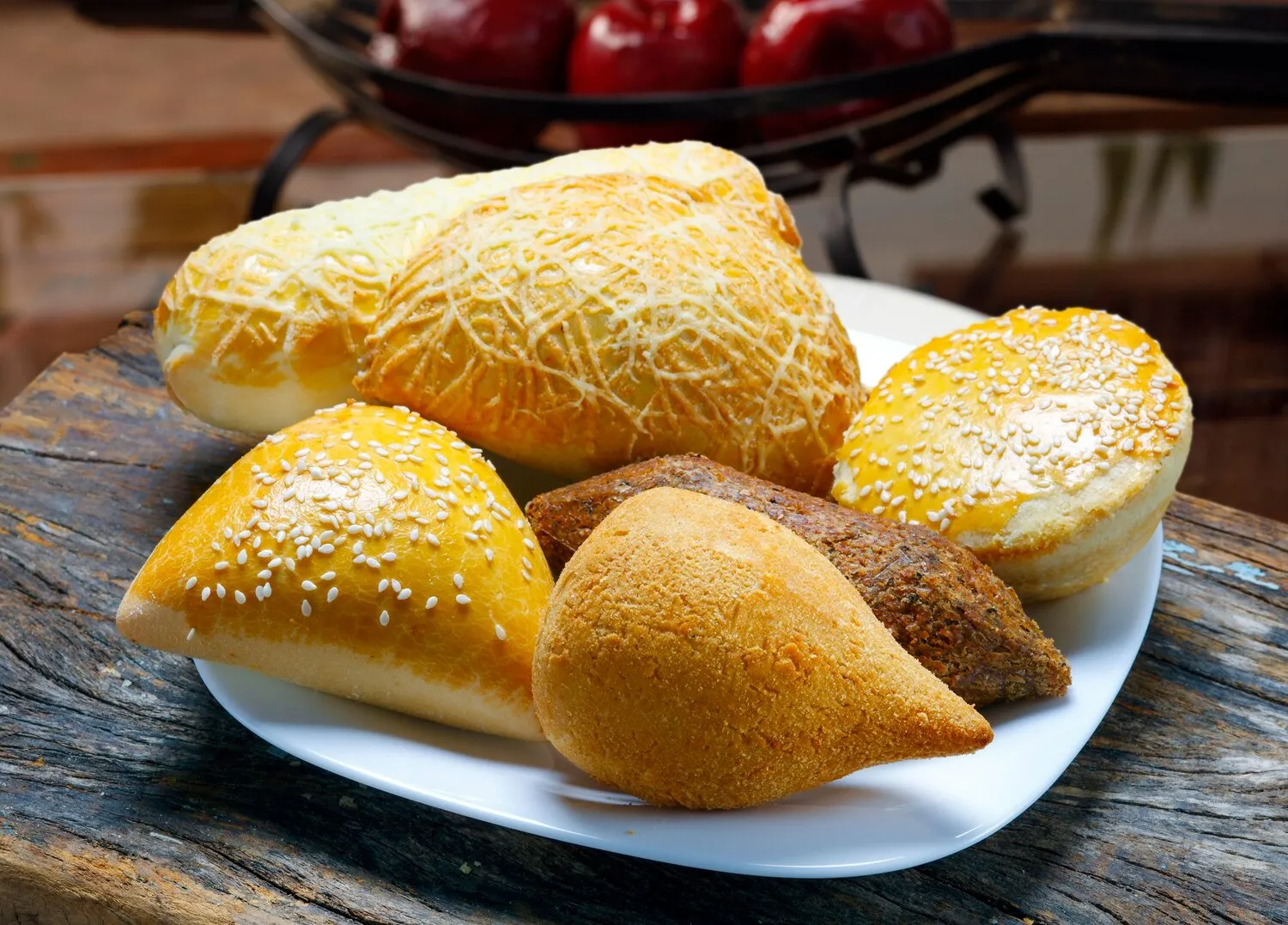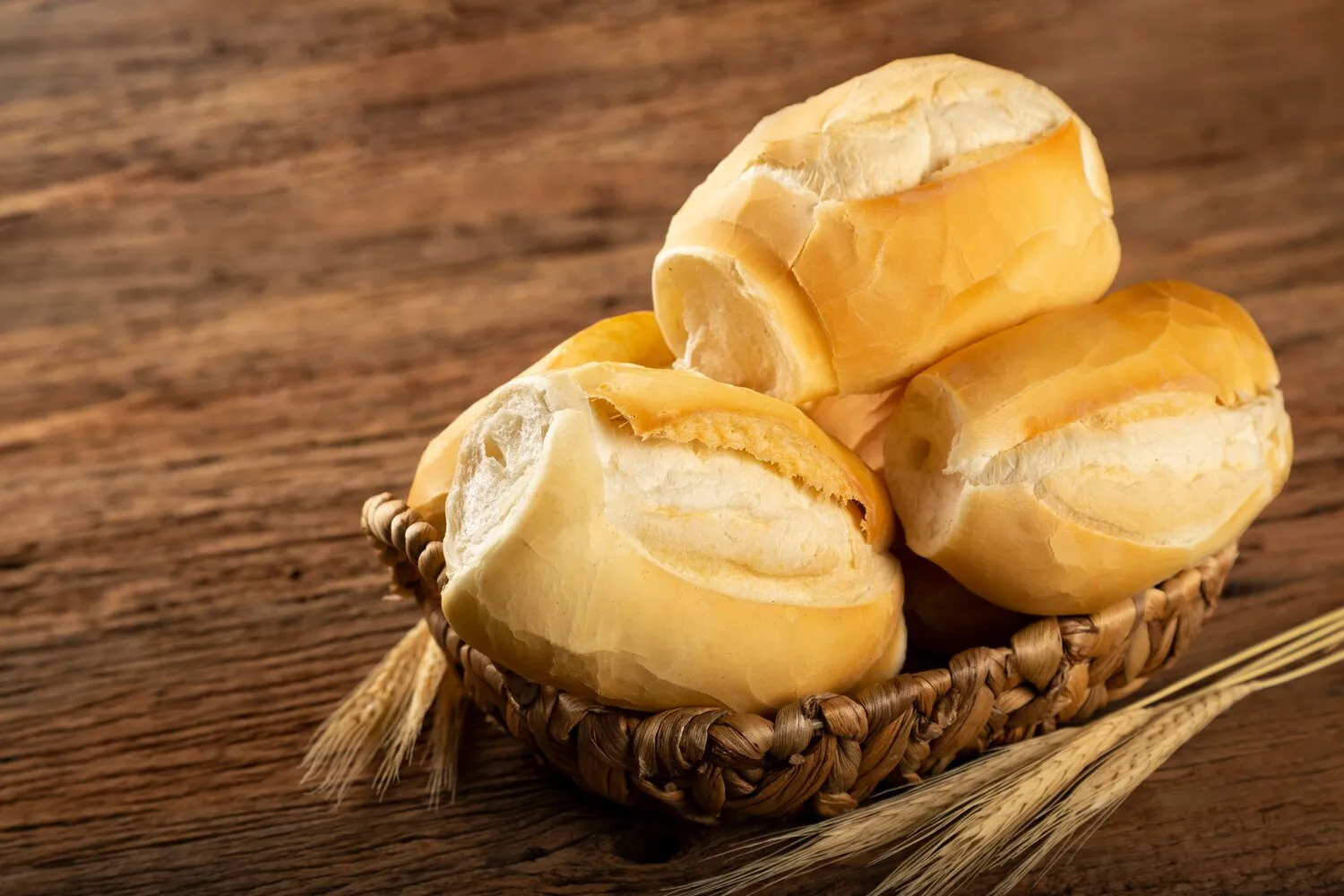
Salgados
Variety of savory pastries such as coxinha, risoles, and empadas.
Nutrition Facts
* The % Daily Value (DV) tells you how much a nutrient in a serving of food contributes to a daily diet. 2,000 calories a day is used for general nutrition advice.
Panificadora Rios
Salgados, a collection of savory Brazilian snacks, have evolved over time, influenced by Portuguese cuisine and the availability of local ingredients. Their popularity grew alongside the rise of street food culture in Brazil, becoming ubiquitous at parties, gatherings, and as quick, affordable meals.
Salgados are deeply ingrained in Brazilian culture, representing a convenient and accessible form of culinary enjoyment. They are a staple at celebrations, informal gatherings, and everyday snacks, fostering a sense of community and shared experience.
Parties and Celebrations
Salgados are almost mandatory at Brazilian birthday parties, weddings, and other celebrations. They are served as appetizers and snacks, providing a variety of flavors to cater to different tastes.
Street Food Culture
Salgados are widely available as street food, sold from small carts, bakeries, and snack bars. They are a popular choice for a quick and affordable meal on the go.
Social Gatherings
Bringing a platter of assorted salgados is a common gesture of hospitality and generosity at informal gatherings with friends and family.
Salgados offer a diverse range of savory flavors, often featuring a rich, creamy filling and a crispy, fried exterior. Common ingredients include chicken, beef, cheese, and heart of palm.
The flavor profile varies depending on the specific salgado. Coxinha, for example, typically features shredded chicken seasoned with onions, garlic, and herbs, encased in a dough made from wheat flour and chicken broth, then deep-fried. Risoles often contain ground beef, ham, cheese, or shrimp, also within a fried dough. Empadas, smaller pie-like pastries, can be filled with chicken, heart of palm, or shrimp in a creamy sauce. The frying process contributes significantly to the overall taste and texture.
Dough Consistency
The dough should be smooth, pliable, and not too sticky. Overworking the dough can make it tough, while underworking can lead to a crumbly texture. Resting the dough before shaping allows the gluten to relax, resulting in a more tender crust.
Filling Moisture
The filling should be moist but not excessively watery. Excess moisture can cause the dough to become soggy during frying. Thicken the filling with cornstarch or breadcrumbs if necessary.
Frying Temperature
Maintain a consistent oil temperature during frying (around 350-375°F or 175-190°C). Too low a temperature will result in greasy salgados, while too high a temperature will cause them to burn quickly on the outside while remaining undercooked inside. Fry in small batches to avoid overcrowding the oil.
Freezing for Convenience
Salgados can be assembled and frozen before frying. This is a great way to prepare them in advance for parties or gatherings. Thaw them partially before frying for best results.
Explore additional Bakery dishes and restaurants
Explore BakeryDiscover top dining spots and culinary experiences in Feira de Santana.
Explore Feira de SantanaLearn more about the food culture, restaurant scene, and culinary heritage of Brazil.
Explore Brazil
